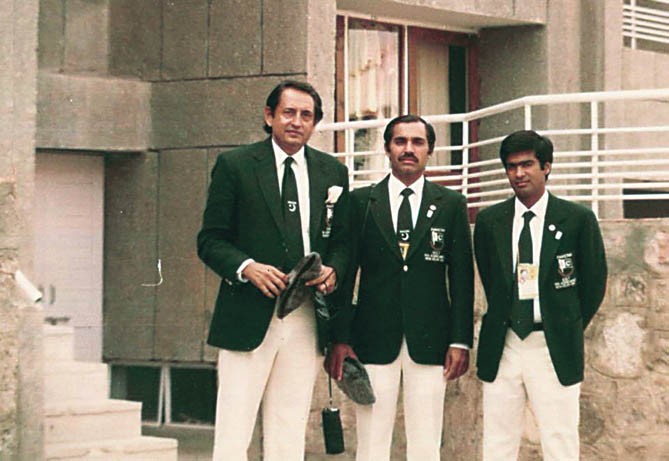
Our sportsmen, including cricketers, will never be able to excel at the international level unless they work hard on becoming fitter and faster

I played a lot of cricket when I was young, but my whole family had a great deal of love for tennis. We had a tennis court at our house in Aligarh. I had a knack for tennis and succeeded in winning the all-India National Junior Tennis Championship in Calcutta (now Kolkata).
I also lifted the Jawahar Lal Nehru Cup in Delhi. My training routine was intense and I did everything I could to keep myself fit.
I used to work out and run five miles every day without any hiccups. So I am aware of the difficult stages of training a player has to go through in the pursuit of becoming physically fit.
To succeed in any sport, especially in tennis, one needs to be extremely fit, as a single match can last for more than six hours. No other sport requires this much dedication.
The fitness of Pakistani sportsmen doesn’t meet international standards. Weight training, in tandem with running for a few miles every alternate day, is essential. Apart from that, an auto-regulatory training method called ‘Velocity Based Training (VBT)’ is becoming common which determines one’s strength and how fast one can swing a cricket bat or a tennis racquet.
Another important factor is diet. It is the responsibility of the management and trainers to ensure that players take a healthy diet. An ideal diet comprises 80 percent complex carbohydrates and 10 percent proteins. Almonds and walnuts can also be included in the diet plan.
Complex carbohydrates are the main source of an energy-making chemical called glycogen. Four hours before a match, the team should be fed with carbohydrates and proteins. The difference in the performance of players during the match will be obvious as these components boost stamina.
Another important aspect that comes into play is the dynamic visual activity, or vision pursuit. It assesses the visual stability during head movement. The players’ pupils give a clear picture of the reception while facing the ball coming from a distance of 22yds with a speed of 70-80 miles per hour. Do our coaches and trainers know about this method?
Of all the teams participating in the ICC World T20 championship in India, Pakistan and Bangladesh were physically the weakest. T20 cricket demands aggression. The physique of the West Indian players is impressive. They are tall and have strong arms. Their victory proves that T20 is a fast-paced game in which aggressive and powerful batsmen are needed.
Our players were not strong enough to clear the boundaries and were most of the time caught in the deep due to their fragile physical strength and slow swing of the arms.
Imran Khan has rightly pointed out that Pakistani players lagged in fitness. There is talent in Pakistan, but it needs to be harnessed by introducing latest scientific methods of training. Poor fitness is one of the most significant reasons why our players are struggling to perform.
American star Tiger Woods emerged as a world-class golfer because he spent an enormous amount of time practising the game.
I was surprised to learn that our players were earning extraordinary sums of money and yet did not feel the urge to improve their fitness.
Skipping rope for 15 minutes every day is the best exercise for arms and legs. It can be extremely helpful for both batsmen and bowlers as it allows the body to coordinate with relative ease.
I saw pictures of our players indulging in football for relaxation during training. I blame the manager, the selectors and the coaches for being ignorant of players’ fitness.
It is imperative that players are selected based on their levels of fitness and a particular amount is slashed from the salaries of those who fail to stay fit.
The players should push themselves to greater limits to improve their fitness by reading books and watching tutorials.
Physical training also helps in avoiding injuries as regular exercise tunes the muscles.
Stopping exercise for a week or ten days takes players back to where they had started from. One can regain one’s form after playing some matches, but it takes months to regain the level of fitness.
When I was playing Wimbledon, there was an Australian player by the name Ashely Cooper, who was trained by Harry Hopman. He won his first match in a close five-set contest. He used to run five miles after every match. His next two matches also took him five sets to win, but he was physically and mentally strong enough not to get carried away by injuries. We should take some lesson from Cooper.
Running enhances stamina and strong stamina is necessary for a player to match world standards.
Players who are not willing to work hard should be discarded and they do not deserve to represent the country.
Pakistan’s sports authorities including the Pakistan Cricket Board (PCB) will have to pay more emphasis to the fitness of our sportsmen. Make the players super fit and the results will be astonishing.